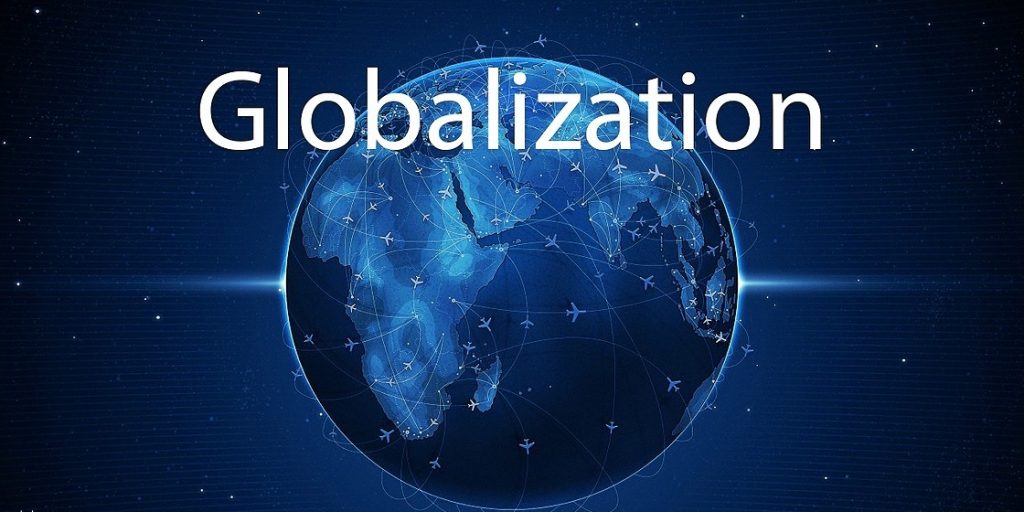
Conversely, opening the economy to trade and long-term capital flows need not make the poor worse off if appropriate domestic policies and institutions are in place–particularly to help shift production to more marketable goods and help workers enter new jobs. Those who are dubious of the benefits of globalization point out that poverty has remained stubbornly high in sub-Saharan Africa. Between 1981 and 2001 the fraction of Africans living below the international poverty line increased from 42 to 47 percent. But this deterioration appears to have less to do with globalization than with unstable or failed political regimes.If anything, such instability reduced their extent of globalization, as it scared off many foreign investors and traders. Volatile politics amplifies longer-term factors such as geographic isolation, disease, overdependence on a small number of export products, and the slow spread of the Green Revolution [see Can Extreme Poverty Be Eliminated?
This allows businesses to draw effective and eco-friendly strategies in their planning and development due to their corporate social responsibility. Today, this advantage is gaining more light in the analysis of the pros and cons of globalization. The I.M.F. argues that it often saves countries from even more budget cuts. ”Countries come to us when they are in severe distress and no one will lend to them,” Rogoff says. ”They may even have to run surpluses because their loans are being called in.”
For example, technology to purify water could save many lives, but the villages in peripheral nations most in need of water purification don’t have access to the technology, the funds to purchase it, or the technological comfort level to introduce it as a solution. But the protesters are also right — no nation has ever developed over the long term under the rules being imposed today on third-world countries by the institutions controlling globalization. The United States, Germany, France and Japan all became wealthy and powerful nations behind the barriers of protectionism. East Asia built its export industry by protecting its markets and banks from foreign competition and requiring investors to buy local products and build local know-how. These are all practices discouraged or made illegal by the rules of trade today. The flow of international investment consists both of long-term capital and of speculative short-term capital .
- Of the top 100 places, Istanbul and Izmir rank the highest when it comes to overall human rights risks, largely because of labor rights violations and the exploitation of migrant and refugee workers.
- Today, the political priorities were less about trade and more about the challenge of retraining workers, as technology renders old jobs obsolete and transforms the world of work.
- More common was the rhetoric of figures such as Friedman, who in his book The World is Flat mocked the “pampered American college kids” who, “wearing their branded clothing, began to get interested in sweatshops as a way of expiating their guilt”.
It does not bode well when the White House hosted a Global COVID-19 Summit, with representatives from more than 100 governments and other partners, and did not invite China, the world’s largest producer of vaccines. In theory, the two countries could insulate their common efforts to combat climate change from differences on most other issues. But, as we saw in the Cold War, in practice such exceptions are very rare and highly vulnerable to ongoing political risk. Globalization brings new potentials for development and wealth creation.
Others have found poorly paid and often dangerous jobs in the informal economy . Given the complexity of globalization, how have feminist political philosophers addressed the social, political, and economic challenges posed by it? Below, we provide an overview of several feminist theoretical approaches to this task. Based on this analysis, citizens in 33 of the top 100 cities for FDI (representing $71 billion of inward investment) are at ‘high’ or ‘extreme’ levels of social risk, meaning they face significant threats to their civil, political, and labor rights.
Feminist political philosophers are also concerned with the gendered effects of structural adjustment policies , which many poor countries have been forced to undertake as conditions of borrowing money or rescheduling their existing debts. The resulting reductions in publicly-funded health services, education, and childcare undermine the health and well-being of everyone they affect. Cuts in public health services have contributed to a rise in maternal mortality.

Some would benefit more than others if these import restrictions and subsidies were lifted. FORTUNATELY, the two sides of the globalization debate are–slowly–developing some measure of agreement. In many areas, advocates in both camps see the potential for coordination among transnational companies, multilateral organizations, developing country governments and local aid groups on programs to help the poor. Going beyond the contentious debates and building on the areas of emerging consensus and cooperation, international partnerships may be able to make a dent in the poverty that continues to oppress the lives of billions of people in the world. Rules and policies have traditionally focused on benefits for global consumers based on comparative advantage. Going forward, countries will need trade rules and rule adjustments that allow them to also pursue other national objectives – labor and environmental standards, urgent health needs, and gains for job-creating, green, and socially beneficial producers.
Like all aspects of global inequity, access to technology in Africa requires more than just foreign investment. There must be a concerted effort to ensure the benefits of technology get to where they are needed most. In the last two decades, there has been rapid improvement in the spread of technology to peripheral and semi-peripheral nations, and a 2008 World Bank report discusses both the benefits and ongoing challenges of this diffusion. In general, the report found that technological progress and economic growth rates were linked, and that the rise in technological progress has helped improve the situations of many living in absolute poverty . The report recognizes that rural and low-tech products such as corn can benefit from new technological innovations, and that, conversely, technologies like mobile banking can aid those whose rural existence consists of low-tech market vending. In addition, technological advances in areas like mobile phones can lead to competition, lowered prices, and concurrent improvements in related areas such as mobile banking and information sharing.
Businesses have responded to each wave of globalization problems by harnessing the technological developments presented to refine their strategy and increase growth. The next era will bring new innovation with artificial intelligence, which will present new opportunities to grow and the ongoing challenge of how to evolve and adapt. Don’t be fooled that a trading system with an unstable web of national controls will be more humane or safer. Poorer countries will find it harder to catch up and, in the rich world, life will be more expensive and less free. The way to make supply chains more resilient is not to domesticate them, which concentrates risk and forfeits economies of scale, but to diversify them.
I had sympathy for some of the issues raised by the protesters, especially their outrage over sweatshops. But I have also spent many years in Latin America, and I have seen firsthand how protected economies became corrupt systems that helped only those with clout. In general, I thought the protesters were simply being sentimental; after all, the masters of the universe must know what they are doing.
Even narrowing the focus further, New York County, with only 2.6% of the US population, accounted for the 13.1% of US infections. In Europe, Lombardy, with only 16.6% of the Italian population, accounted for 37.6% of total infections in Italy. This striking geographical concentration of infections in the most prosperous metropolises in the world was a prominent feature of the COVID-19 pandemic during the first half of 2020. We examine the initial phase of the COVID-19 pandemic until mid-May from a spatial economics perspective.
The Disney stores are located worldwide, throughout the US, UK, Spain Italy, Japan, and France. Since May 1st 2008, the Walt Disney Company owns all Disney stores in America, Canada and Europe, however the stores in Japan are owned by the Oriental Land Company, for example, Disneyland Tokyo. In the year 2004 alone, merchandise has made $2.5 billion for the company, a figure that shows how globally successful Disney really is. One reason, says Wolf, was that “a very, very large proportion of the gains from globalization – by no means all – have been exploited. Today, the political priorities were less about trade and more about the challenge of retraining workers, as technology renders old jobs obsolete and transforms the world of work. The nature of globalization in the 21st century – fueled by post-war economic booms, sweeping global movements of liberalization and freedom, and the rise of dominant multinational corporations – led to the ever increasing connected world and economy.
However, although globalization has many disadvantages, we believe that globalization has brought the developing countries many more benefits than the detriments. For example, we can see there is more and a biggest opportunity for people in both developed countries and developing countries to sell as many goods to as many people as right now, so we can say this is the golden age for business, commerce and trade. Moreover, they warn that attempts to explain the suffering of women in developing countries in simplistic terms often tend to reproduce a “colonial stance” toward the global South. For instance, as we explained above, Chandra Mohanty sees elements of imperialism in Western feminist scholarship on women in the global South.


